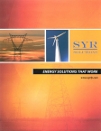



| Home | Electricity | Environment | Market Update | Contact Us |
Time is the school in which we learn, time is the fire in which we burn.
Delmore Schwartz
| Electricity |
| Customer Classifications |
| Competitive Markets |
| Retail Strategies |
| Timing |
Timing
- Timing is critical for obtaining low fixed energy prices because of the link between fixed electricity and future natural gas prices; future natural gas prices change continuously and identifying times when these prices are low requires market knowledge and dedicated market monitoring.
- Timing is less critical when using variable electricity prices since such pricing is usually designed to follow market ups and downs and take advantage of often low month to month natural gas prices, real time rates, or Day Ahead prices.
- Recent history has demonstrated how natural gas prices can be impacted (or not):
- Following Hurricanes Katrina and Rita in 2006, prices for electricity in Texas from all sources reached unprecedented high levels; it was over a year before fixed prices returned to previous levels. Customers with long term fixed price contracts were unaffected whereas those on variable pricing incurred high costs.
- In April through June 2008, Texas experienced severe transmission congestion issues causing real time (15-minute interval) prices to reach levels higher than those after Hurricanes Katrina and Rita. Natural gas prices were also very high at the same time, giving customers on real time-indexed prices no reasonable alternatives. Many converted to high fixed prices and others rode out what turned out to be a very short term market event.
- The decline in natural gas prices that started in July 2008 was unaffected by Hurricane Ike in September 2008 and continued into 2009 and 2010.
- Many retailers now allow commercial and industrial customers to sign new electricity or natural gas contracts or execute renewals up to a year in advance of current contract expiration. This provides an opportunity to capture low future prices when they occur and avoid possible price spikes close to contract expiration.